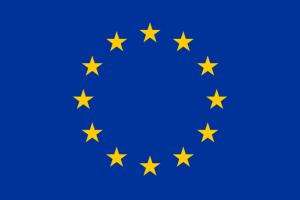Silk threads connecting Kavaja with Europe

A short women’s shirt, woven with silk thread on a loom and used for ceremonies by the newly wedded bride, who paired it with shalwar, stands in one of the rooms of Ethnographic Museum of Kavaja. It represents the richness of the city's culture, as silk thread production remains one of the most recognised traditions of Kavaja.
Traded regularly at the market, large quantities of silk were exported regularly in Europe establishing a strong connection with the Western world. Kavaja’s artisanal and commercial profile over the centuries boosted the economic exchange of the city's merchants who traded with Ragusa, Ancona, Florence, Austria, France and cities of the Ottoman Empire, particularly in the 19th century.
Dominated by women artisans, the collection, preparation and weaving with silk threads started with the cultivation of mulberry trees, the most favourite plant for growing silkworms, which was almost in every courtyard of Kavaja’s residents and also aligning the sides of the city's shopping streets. “Up to 50 thousand linear meters of silk thread were exported to Venice per year. Preparation of dowry and producing for sales around the city was in the complete care of women of Kavaja while the loom remained the main tool with which girls were trained to learn weaving from a young age. With this acquired skill, the woman provided for every household need in silk or cotton textile materials, home accessories or even clothing”, reads one of the info panels of the Ethnographic Museum of Kavaja, recently inaugurated after extensive restoration under the programme EU4Culture.

EU Delegation to Albania
Silk clothes are among 800 artifacts of various types, part of the museum’s collection, which provides visitors with an authentic view into the daily lives of past generations, documenting centuries of traditions, routines, family celebrations and community gatherings and its relationship with the world, then and now.
"This museum isn’t just about preserving the past; it’s a vibrant space for the community, showcasing Albania’s rich craftsmanship and cultural heritage. Bringing together local historians, artisans, international experts in partnership with UNOPS, we’re building a bridge between Albania’s history and its future. A place that speaks to all generations and brings together an entire community! Our EU4Culture programme is helping Albania to preserve and celebrate its heritage. It is also building platforms for interaction between peoples, cultures and religions,” said EU Ambassador Silvio Gonzato during the inauguration ceremony.

EU Delegation to Albania
Albania’s cultural tourism segment continues to grow, with an increase of 15.2% in 2024, compared to 2023. Lira Pipa, Deputy Minister of Economy, Culture and Innovation in Albania highlighted that the facilities renovated by EU4Culture, include some of the most important landmarks of the country. "Following the example of the complete renovation of the Vilë-Bashtova Castle, Kavaja Ethnographic Museum will also be transformed into another cultural and tourist magnet".
Placed around Via Egnatia, several of these facilities, damaged by 2019 earthquake witness country's history and its values. Their restoration and renovation connects the city with its citizens and their common history.
"We know where we come from and we need to know where we are going. This is an unique treasure for our city and this museum obliges us with a unique responsibility. We will turn it into a pilgrimage site for every tourist who visits the beaches of Golem", Kavaja mayor Fisnik Qosja said.

EU Delegation to Albania
The museum
The museum is housed in a charming one-story residential dwelling constructed in 1800 by the Arkaxhi family in Skuraj neighbourhood. Built by a father for his two sons, it has two symmetrical wings with two central leaving rooms with open fireplaces. While the building hosting the Museum is almost entirely authentic, it suffered severe damages during the 2019 earthquake. Damaged roof structure was causing leakage, adobe wall masonry was bulging and partially collapsing due to water infiltration, causing deterioration of timber elements, including ceilings and floors while windows, doors, roof and porch structure needed a complete repair. The building underwent a full restoration, including the roof, reconstructing the walls made of adobe using the exact same typology of the adobe bricks which were manufactured specifically for this building and a full conservation or restoration for all timber decorations, interior inbuilt furniture, windows, ceilings and floors. The interior elevations were re-plastered using traditional mud-based plaster mixed with hay, while the final coating was lime plaster reinforced with goat hair. With an electrical wiring fully upgraded and its surveillance and security system installed, now the visitors can explore the collection through different rooms and new multimedia features, including a virtual dressing room, augmented reality experiences, interactive games for children, video and audio narratives. During the inauguration ceremony, a group of children were the first visitors to discover the traditional costumes as they chose the clothes for the mannequins on touch screens. Others, learned about costumes through games and holograms of working artisans depicting the production traditions while listening to traditional songs and watching 3D photos of local artists wearing Kavaja's traditional costumes.

EU Delegation to Albania
BACKGROUND INFORMATION
The EU4Culture programme is funded by the European Union (EU) and is implemented by the United Nations Office for Project Services (UNOPS) in close partnership with the Ministry of Economy, Culture and Innovation. It focuses on renovation and revitalisation of 23 major cultural heritage sites damaged by the earthquake in 2019 and represents one of the largest cultural heritage programmes funded by the European Union with a total budget of € 40 million. It aims to enhance Albania’s tourism potential, thus directly contributing to local and regional socio-economic recovery. To that aim, special focus is given to innovative technologies, including digital story-telling and creation of multimedia products designed to be accessible for all. At the same time, the programme is supporting local entrepreneurship, artisanship and cultural initiatives evolving around selected sites through the allocation of grants, providing a direct boost to the local economy.




